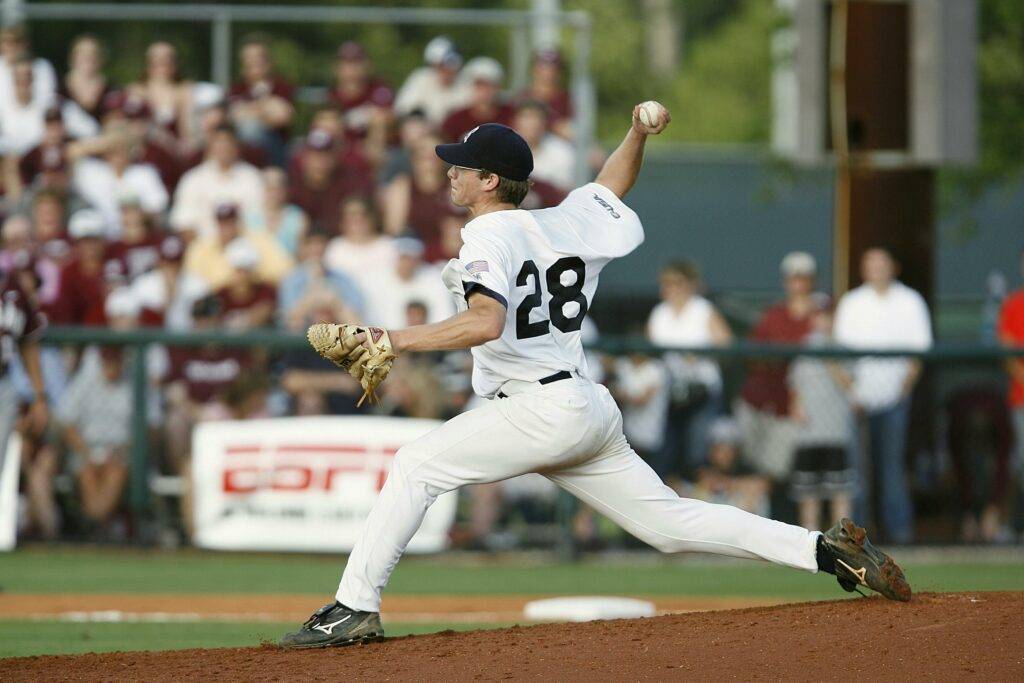How To Secure A Men's Hockey Scholarship
College hockey offers a competitive pathway for student-athletes who aim to continue their careers at over 150 four-year institutions and a few junior colleges. With 60 NCAA Division 1 and 81 Division 3 programs, the competition for roster spots is fierce. NCAA Division 2 hockey is offered at only seven schools, making it the smallest division for the sport. College coaches primarily recruit from junior hockey leagues, particularly focusing on players from the top-tier USHL and NAHL leagues, as well as international talent. In fact, 21 percent of NCAA men’s college hockey players are international, with many coming from Canada and Europe.
Here’s what prospective college hockey players need to know to navigate the recruiting process and improve their chances of landing a spot on a college team.
How hard is it to play college hockey?
Earning a spot on a college hockey team is no easy feat. Most NCAA Division 1 coaches focus on recruiting players from tier 1 junior leagues, such as the USHL, which is considered the top development league in the U.S. Many USHL players either move on to the NHL or commit to NCAA programs. Tier 2 players, competing in the NAHL or NCDC, are more likely to be recruited by mid-level Division 1 schools or Division 2 and 3 programs.
Athletes who aren’t part of a junior hockey league will need to go above and beyond to prove their skills and earn a college roster spot. They should work closely with their high school or club coaches to assess their talent and find programs that match their abilities.
When does the recruiting process begin for college hockey?
For NCAA Division 1, college coaches can start contacting recruits as early as January 1 of their sophomore year. Division 2 coaches must wait until June 15 after the athlete’s sophomore year. However, the recruiting process starts long before this official contact period. Coaches attend tournaments, camps, and combines to evaluate talent early on and build their list of prospective recruits.
At what age do hockey players get scouted?
Scouting often begins in 8th grade, with college coaches watching players compete in tournaments and events. The NCAA’s recruiting rules prohibit direct contact until a recruit’s sophomore year to create a fair process and avoid early pressure on student-athletes.
Do you have to play junior hockey to play college hockey?
Yes, competing in junior hockey leagues is often necessary for athletes aiming to play NCAA hockey. Junior hockey provides athletes with exposure to college coaches, advanced competition experience, and recruiting education. Junior hockey leagues are organized into three tiers:
- Tier 1: The USHL, which produces the most Division 1 recruits.
- Tier 2: The NAHL and NCDC, which supply talent to mid-level Division 1 and top Division 2 and 3 programs.
- Tier 3: Leagues such as the EHL and NA3HL, which primarily feed Division 3 and ACHA teams.
How to get recruited by a D1 college for hockey
To get recruited by a Division 1 hockey program, athletes must typically compete in the USHL or NAHL. College coaches focus their recruiting efforts on these leagues due to the high level of talent and competition. Athletes should also maintain strong academic records to meet NCAA eligibility requirements.
How college hockey coaches recruit prospects
College hockey coaches evaluate recruits by attending major tournaments, showcases, and camps. These events provide opportunities for athletes to showcase their skills in front of multiple coaches. Highlight videos are also essential for recruits, allowing coaches to assess talent remotely.
How do you get a hockey scholarship?
NCAA men’s hockey is an equivalency sport, meaning coaches divide their scholarship budget among multiple players. Fully funded Division 1 programs can offer up to 26 scholarships, while Division 2 programs have a limit of 13.5. Recruits from the USHL or elite international programs are most likely to receive full scholarships, while others may be offered partial scholarships.
College hockey national signing day
Recruits who receive scholarship offers from NCAA institutions will sign a National Letter of Intent (NLI), officially committing to a program. The NLI signing period typically begins in November and runs through August.
Quick Links


